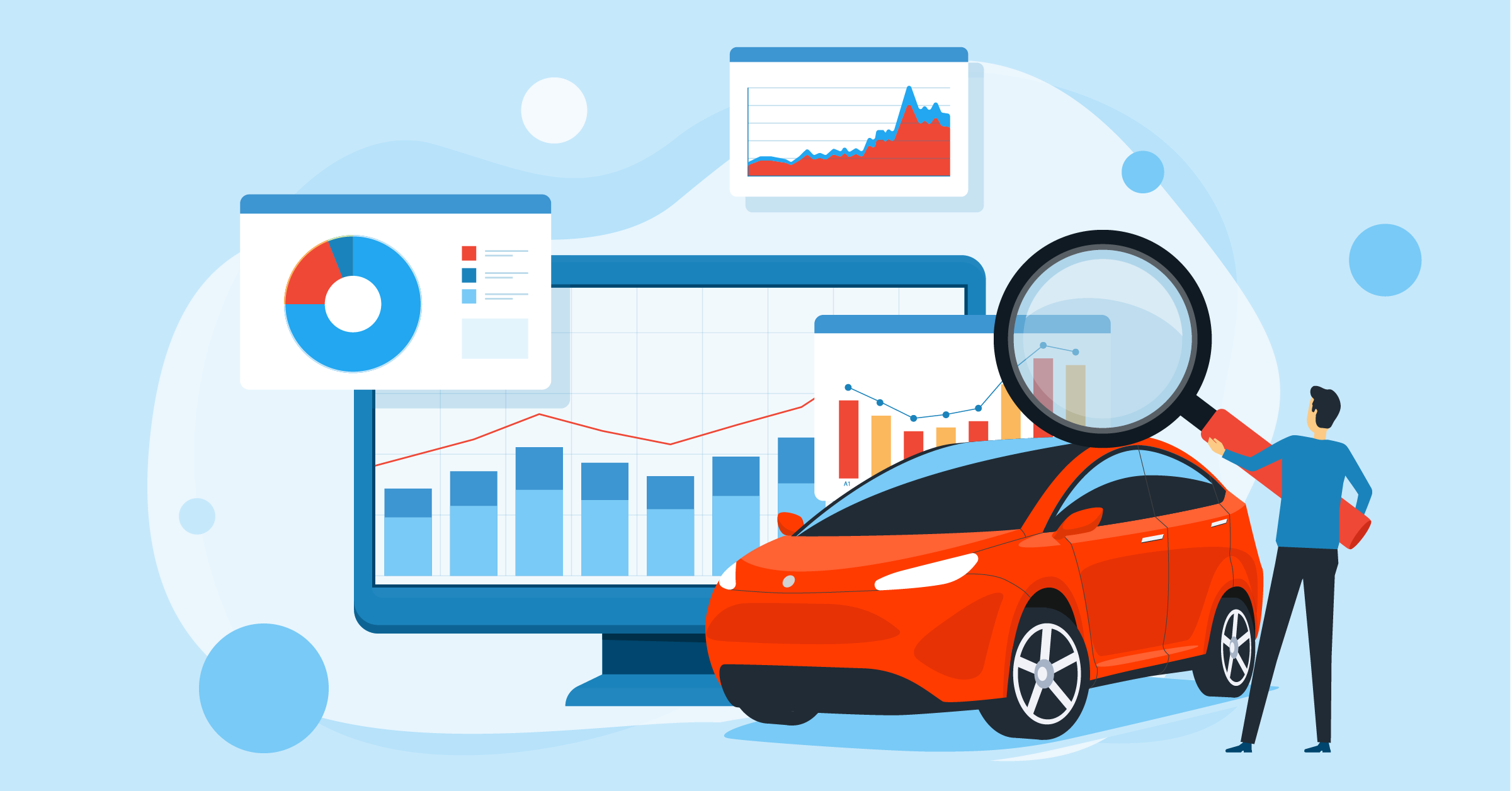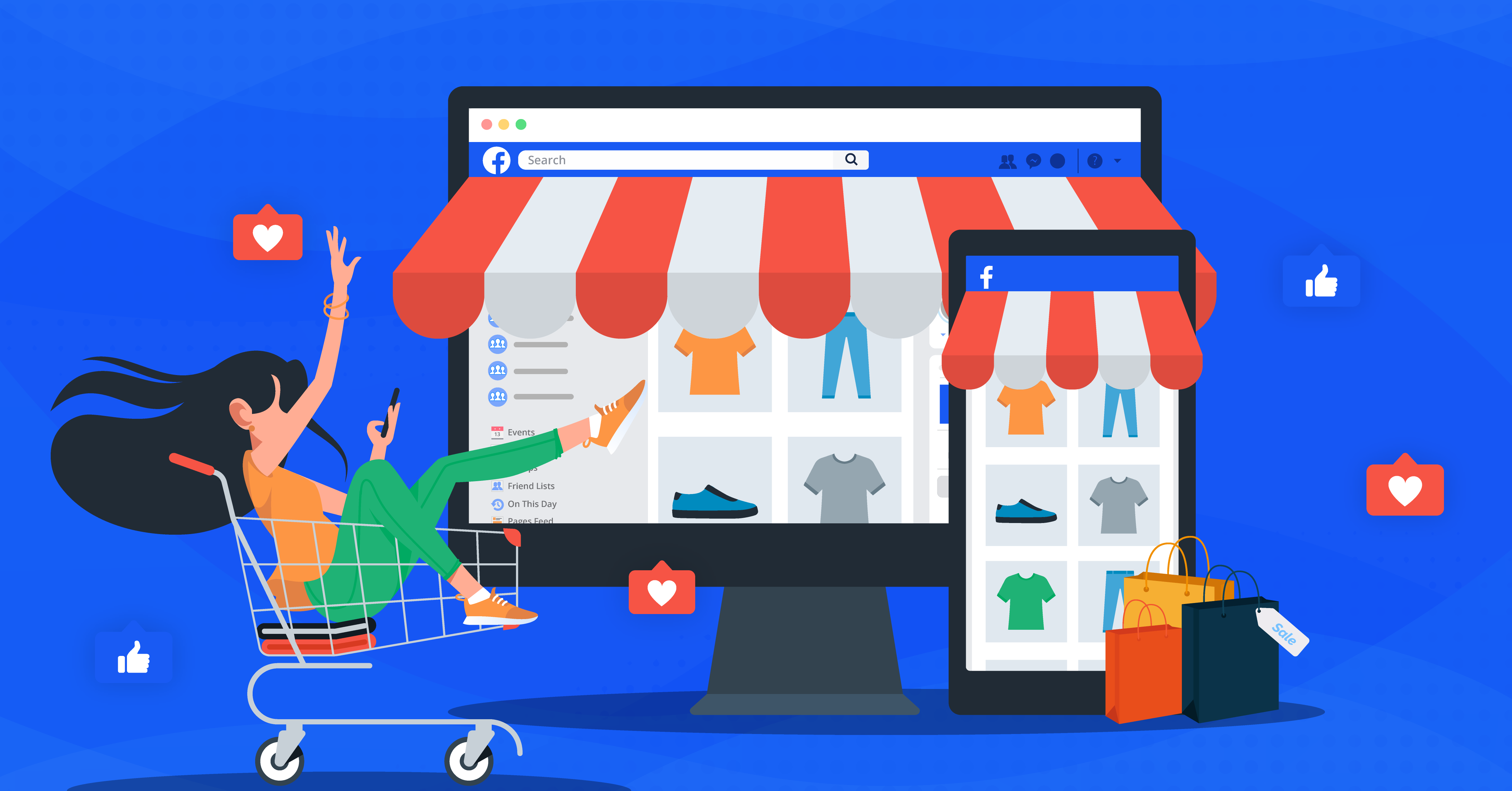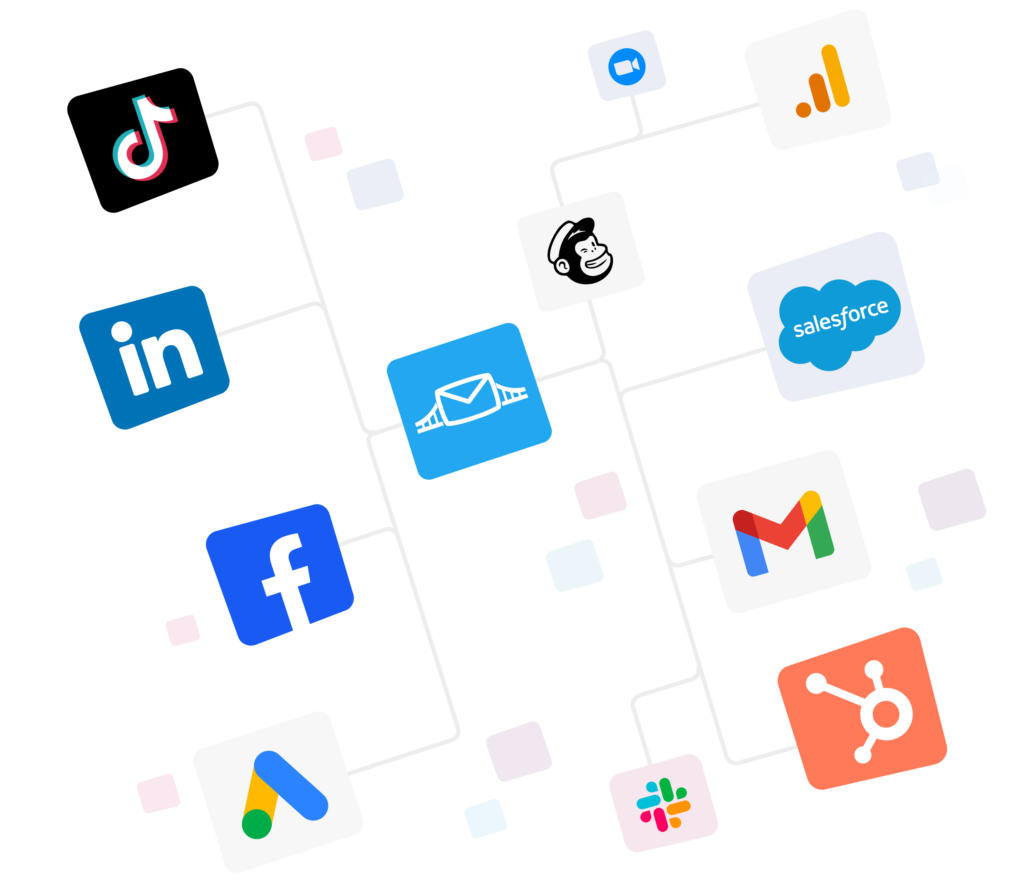
Meta advertising is about promoting ads in different channels and reaching audiences. It focuses on advertising tools, ad placements, industry-specific events, and using machine learning.
All this is to offer the most relevant products and services to people and businesses who might be interested in them. That’s why running ads across Meta technologies has become a playground for those who create advertising content and generate leads on Facebook and Instagram.
This guide will explain what Meta ads are, their benefits, ad placements, and policies to help you effectively use them for your marketing strategy.
- What are Meta ads?
- How to set the campaign budget for Meta ads
- General benefits of using Meta ads for businesses
- Strategic benefits of Meta ads
- Main Meta ads placements
- Ways to use Meta Ads for business growth
- Monitoring Meta ads results: How to tackle them?
- How LeadsBridge can boost your Meta ad campaigns
- What to take away from this?
Additionally, we’ll talk about how to have all your applications work together and in sync with your Meta ads. Of course, this means using integrations that help create a complete view of your lead data, such as:
What are Meta ads?
Meta ads refer to the advertising solutions that Meta Platforms Inc. offers. This includes ads across all Meta technologies (Facebook, Instagram, Messenger, and to some extent, WhatsApp).
These ads help you target specific audiences based on different criteria like demographics, interests, behavior, and even your own CRM segments.
Main types of Meta Ads
Meta offers a variety of ad formats to help you achieve specific marketing goals and engage users across Facebook, Instagram, Messenger, and the Audience Network. The main types include:
- Dynamic ads: Automatically show relevant products based on user behavior; good for retargeting.
- Image ads: Single static image; simple and effective for quick promotions.
- Video ads: Motion content for storytelling or product demos.
- Carousel ads: Multiple images or videos in one ad; great for showcasing variety.
- Slideshow ads: Lightweight video-like ads made from images; ideal for slower connections.
- Collection ads: Feature product collections with a cover image/video; taps into shopping behavior.
- Instant experience ads: Full-screen mobile ads for immersive engagement.
- Lead ads: Built-in forms to capture user info without leaving the platform.
Difference between Ads Manager and Meta Business Suite
Ads Manager and Meta Business Suite are both tools designed to help businesses manage their presence across Meta technologies (Facebook and Instagram). Nevertheless, they serve different purposes.
- Ads Manager is a tool just for running ads on Facebook, Instagram, Messenger and Audience Network.

It helps you create, track, and optimize your ads. It also allows you to choose the right audience, set budgets, and check your Meta ads results in real time. In a few words, it’s all about ads.
- Meta Business Suite is a more comprehensive tool for managing everything about your brand’s presence on Facebook and Instagram.
It lets you schedule and post content, reply to messages, manage comments, track insights, and run ads.
The main difference between Ads Manager and Meta Business Suite is how they function. Ads Manager focuses only on advertising, while Meta Business Suite helps you manage both content and ads, as well as audience engagement. It’s best if you use them together. Nevertheless, each has its specific role.
How Meta ads work
You pick a goal (sales, leads, visits). You add creative and set a budget. Each time someone sees an ad, an auction runs.
Meta ranks entries based on your bid, the likelihood someone will act, and a score for your ad quality.
The platform can also run delivery tests, audiences, and placements, which can help focus your ad budget to the best mix.
Meta Pixel and Conversions API send back what happened, which sharpens targeting and measurement. You monitor results and tweak targeting, creative, and bids to steadily lower cost per outcome.
How to set the campaign budget for Meta ads
Speaking of a campaign budget for Meta ads, let’s take a closer look at what you need to consider.
For starters, you’ll have to choose between two options: Advantage+ campaign budget or ad set budgets. The campaign budget approach (using Advantage+) lets you set a single budget for the entire campaign.
Meta then automatically distributes that budget across ad sets in real time, while focusing more on the ad sets that would perform best. This method is ideal if you’re looking for an easy setup and don’t need to control spending at the individual ad set level.
But if you prefer more granular control, go for ad-set budgets instead. This way, you manage how much is spent on each ad set separately.
General benefits of using Meta ads for businesses
Do Facebook ads work for small businesses?
Or, is it worth learning how to create and manage your Instagram ads?
Meta ads offer a number of advantages for businesses, which have made them a must-have option in any digital marketing strategy:
1. Targeted advertising is as good as it gets, based on location, age, gender, interests, and even past interactions with their brand.
2. Wide audience reach to over 3 billion active users.
3. Advertising budget management. You can adjust bids to make sure you only spend what you can afford.
4. Meta ads automation. With products like Advantage and Advantage+, Meta offers powerful options for automated optimization that help streamline your advertising efforts.
5. Third-party integrations. Connecting Meta ads with your CRM through a Meta Business Partner, such as LeadsBridge, helps to automate your marketing workflows to and from Meta platforms.
This integration allows automatic lead data synchronization, keeping your CRM up to date with new leads from your Meta ad campaigns.
Strategic benefits of Meta ads
Why does running ads across Meta technologies get so much hype?
Besides the fantastic targeting option and building the perfect ad, there are a few other reasons!
- Accessible cost caps: You can adjust your spending. Anything from your average order value down to your target customer acquisition cost. Find out how much you should spend on your Facebook ads here.
- Building multiple campaigns: It lets you tailor separate campaigns for different products by making each ad more relevant and effective.
- Posting organic content: You can mix regular content with your ads to boost your brand’s credibility and engagement.
- Enabling product seeding: In addition to a massive audience base, there are a ton of influencers. You can get your product into the hands of known influencers in your field to increase visibility and interest.
Main Meta ads placements
Meta ads can appear in several placements across Meta’s platforms, which you can select based on your target audience and ad strategy. To do that, however, you’ll need to understand these placements and choose the most effective spots for your ads:
Facebook feed ads
Ads appear in the user’s news feed alongside the posts from friends and pages they follow. These ads are designed to sit well with organic content, in order to increase the likelihood of engagement.
Below is an example of a video ad in the Facebook feed:

Instagram feed ads
Similar to Facebook, Instagram feed ads show up between posts from accounts the user follows. This also makes them highly engaging.
Take a look at this Instagram feed ad, for example:

Stories ads
Stories ads are available on both Facebook and Instagram, which appear between users’ stories. These are full-screen ads and great for capturing attention with immersive content.
Here’s an example of a stories ad on Meta:

Messenger ads
You can also decide to place your ads in the Messenger app. They can appear either as sponsored messages or in the chat feed, while offering a personal touch.
Take a look at this Messenger ad example:

Audience network ads
Meta Audience Network is a unique tool that extends your ads’ reach to third-party apps and websites. You can use it to increase visibility beyond Facebook and Instagram.
Let’s see what an Audience Network ad might look like:

Main Meta ads policies
Meta’s ad policies make sure that ads are okay to run on platforms like Facebook, Instagram, and Messenger.
Overall, your ads must be clear, genuine, and not misleading. Any claims made in the ads should be substantiated with evidence.
There are also certain types of content, such as adult products, weapons, and misleading claims, that are not allowed in Meta ads.
Here’s what you need to know and watch out for:
- Content rules: No swearing, too much skin, or false info in ads.
- Personal attributes: Don’t make assumptions in ads about personal traits.
- Sensational content: Stay away from content that’s too shocking or violent.
- COVID-19: There are specific rules for content about COVID-19.
- Cryptocurrencies: Only certain crypto ads are allowed.
- Dating services: There are specific rules for dating service ads.
- Addiction treatment: Specific rules apply to ads for drug and alcohol treatment.
- Online gaming and gambling: There are rules for gambling and gaming ads.
- Personal health and appearance: Ads shouldn’t make people feel bad about themselves or promise unrealistic results.
- Alcohol: There are rules about ads for alcohol.
- Political issues: There are specific rules for ads about politics or social issues.
- Rules for Specific Platforms:
- Facebook: Follow Facebook’s Community Standards.
- Instagram: Stick to Instagram’s Community Guidelines.
There are also rules for branded content, sales, pages, events, and messages on Meta platforms.
For more details, check out Meta’s Business Help Centre.
Ways to use Meta Ads for business growth
- Start by building a funnel strategy
Create a structured journey for users:
- Top of funnel: Introduce your brand with broad-interest content (video, lifestyle images).
- Middle of funnel: Retarget users with educational or trust-building content (testimonials, case studies).
- Bottom of funnel: Drive action using urgency, offers, or personalized dynamic ads.
- Use lookalike audiences based on high-value customers
Upload your best customers (e.g., repeat buyers or subscribers), then create a 1% lookalike audience. This focuses your budget on users who are statistically more likely to convert.
- Leverage dynamic product ads for ecommerce
Connect your product catalog and run Dynamic Ads to automatically show personalized products based on user behavior (e.g., viewed, added to cart, but didn’t buy).
- Run multi-placement campaigns
Start with Advantage+ placements across Facebook, Instagram, and Messenger. After enough data, analyze by placement and allocate more budget to the best-performing ones (e.g., Instagram Reels, Facebook Feed).
- Pair your ads with optimized landing pages
Clicks are pointless if they don’t lead to a high-converting landing page. Focus on fast load times, mobile-first design, clear CTAs, and one conversion goal. Use Meta Pixel to track and optimize actions post-click. For client presentations, you can showcase campaign results using a digital pitch deck creator tool to build visually compelling reports that highlight ad performance, ROI, and key insights from your Meta campaigns.
- Scale winning campaigns strategically
If an ad is performing well, increase budget gradually (no more than 15–20% every few days). Sudden spikes can trigger a reset in the learning phase, hurting results.
- Use authentic creative (UGC + Lo-Fi Ads)
Test content that feels native to the platform, like user-generated videos, reviews, or behind-the-scenes clips. These often outperform polished, brand-heavy creatives by feeling more trustworthy.
- Use Automation and AI both in-app and third-party
Use Meta’s Advantage+ tools for automated bidding, budget allocation, and creative variations. Also, consider third-party integration to take data management off your hands.
- Auto-launching ads based on performance rules
- Predictive audience insights
- AI-generated creatives tailored to your goals
- Integrations to make your ad management more data-driven
Monitoring Meta ads results: How to tackle them?
Without monitoring your Meta ads results, you’ll never know what you can improve, what is already working, and how to get the most out of your ad budget.
Meta provides several tools to help you track your results. Take a look at how you can easily oversee your Meta ads results:
Look for key metrics: Start by looking at basic data like impressions (how many people saw your ad), clicks (how many clicked on your ad), and conversions (how many people took the desired action, like making a purchase).
Use Meta Ads Reporting: You can customize reports to focus on metrics that matter most to your business. For example, tracking the cost per lead.
Identify trends and make changes accordingly: Notice certain trends in your ad performance and find which of your ads perform better.
See how third-party tools can help: You need automation to simplify this process.
Tools like the Meta Conversions API: This lets you send off-site data to Meta to understand your ad performance better and optimize campaigns. This information could include customer journey details and CRM data.
How LeadsBridge can boost your Meta ad campaigns
If you want to manage your Meta ads better, you can link them to your data technology stack (your CRM, autoresponder, email marketing apps, etc).
By creating these automated data bridges, you automate tasks and don’t have to switch between different systems all the time.
Integrating your Meta ads with LeadsBridge can help you achieve all of these.
Lead ads integrations
These let you automatically sync lead data from Meta ads to your CRM, email marketing software, or any other marketing tool.
In addition to scoring your leads and segmenting them into appropriate groups, these integrations save time and reduce manual errors.
You can try out our most popular integrations for Facebook lead ads and Instagram lead ads using our free trial.
Take a look at the LeadsBridge plans here.
Audience targeting integrations
An interconnected data ecosystem lets you access all the information about your existing customers, prospects, leads, and audiences.
Then you can ensure your ads reach the most relevant users while nurturing them and following up with your campaigns at the right time.
Meta offers many specialized tools like custom audiences and conversion leads performance goal for optimized targeting. However, you need to integrate them with your preferred marketing apps to access all your data in a centralized data hub.
Conversions API integrations
Conversions API sends data back to Meta about which leads have converted based on the latest information in your CRM. Essentially, it tracks user interactions on your website directly from your server to Meta, without needing cookies.
Don’t see the integrations that you need? LeadsBridge also offers tailor-made integrations to meet your unique business needs. Request a custom integration here.
What to take away from this?
Meta ads are a powerful advertising tool in the toolkit of any digital advertiser. Despite their popularity, not everyone knows about the exact anatomy of a Facebook ad, what Meta ad placements are, or how to adhere to their policies.
Integrating your Meta ads with your CRM through LeadsBridge can take your marketing efforts to the next level.
Ready to automate your lead data synchronization and improve your audience targeting? Explore LeadsBridge’s integration solutions with Meta ads and start optimizing your marketing strategy today.


























